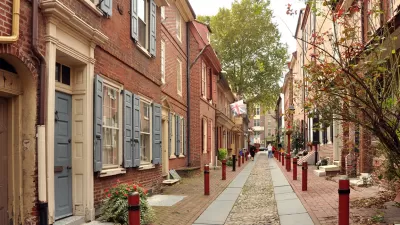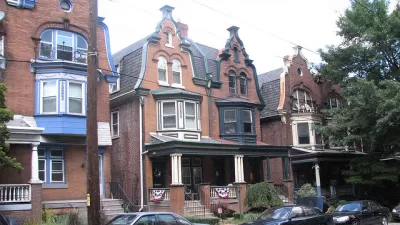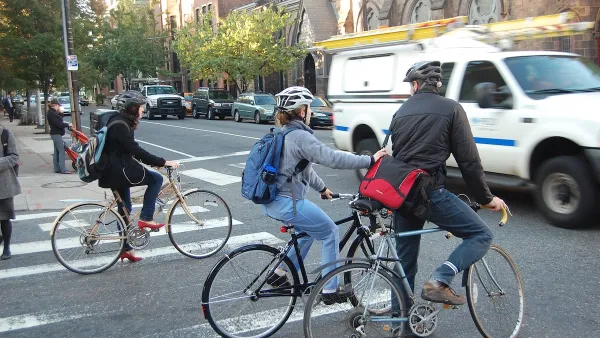How well do public spaces reflect the changing conceptions of "public good" in contemporary political discourse? The UPenn design community starts a challenging conversation.

PennPraxis, a design collaborative spawned by faculty and students of University of Pennsylvania's design school, will begin a program called the Praxis Dialogues, in partnership with PlanPhilly. The series of conversations will begin with an exploration of the public good and its meaning for the design community. The program is free and open to the public.
From the PlanPhilly blog:
"We are all, in some manner, motivated by public good...Public good in a full sense challenges us to envision shared spaces as not just those leftover once private goods are consumed. How does our shared, “public” realm express and live up to our political and social ideals? We owe it to ourselves, our collaborators, and our fellow citizens to be explicit about this ideal – and to be candid in our evaluation of how we succeed or fail to realize it."
Recognizing the public good as a political concept, the questions posed are challenging and will address such timely issues as access, stewardship, ownership, and cultural confidence. The emphasis will be on practice rather than lofty abstractions. "Ideas of public good are changeful, reflections of the politics of a moment. The current moment is messy."
Questions posed will also address the public good with respect specifically to Philadelphia and its current political environment.
FULL STORY: Praxis Dialogues: The 'public good' in practice

Planetizen Federal Action Tracker
A weekly monitor of how Trump’s orders and actions are impacting planners and planning in America.

San Francisco's School District Spent $105M To Build Affordable Housing for Teachers — And That's Just the Beginning
SFUSD joins a growing list of school districts using their land holdings to address housing affordability challenges faced by their own employees.

The Tiny, Adorable $7,000 Car Turning Japan Onto EVs
The single seat Mibot charges from a regular plug as quickly as an iPad, and is about half the price of an average EV.

Seattle's Plan for Adopting Driverless Cars
Equity, safety, accessibility and affordability are front of mind as the city prepares for robotaxis and other autonomous vehicles.

As Trump Phases Out FEMA, Is It Time to Flee the Floodplains?
With less federal funding available for disaster relief efforts, the need to relocate at-risk communities is more urgent than ever.

With Protected Lanes, 460% More People Commute by Bike
For those needing more ammo, more data proving what we already knew is here.
Urban Design for Planners 1: Software Tools
This six-course series explores essential urban design concepts using open source software and equips planners with the tools they need to participate fully in the urban design process.
Planning for Universal Design
Learn the tools for implementing Universal Design in planning regulations.
Smith Gee Studio
City of Charlotte
City of Camden Redevelopment Agency
City of Astoria
Transportation Research & Education Center (TREC) at Portland State University
US High Speed Rail Association
City of Camden Redevelopment Agency
Municipality of Princeton (NJ)




























